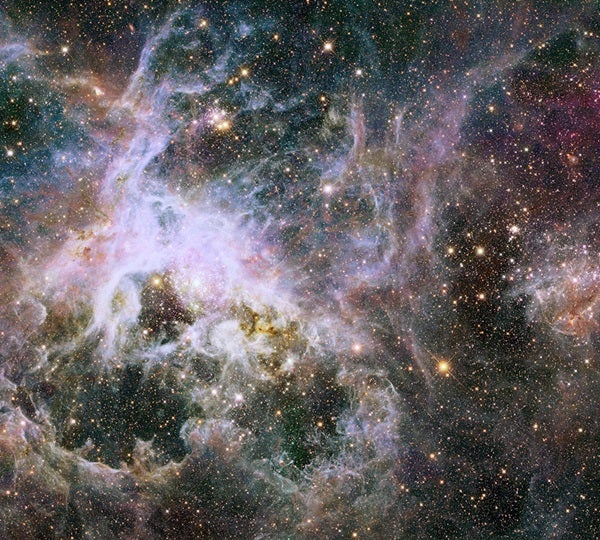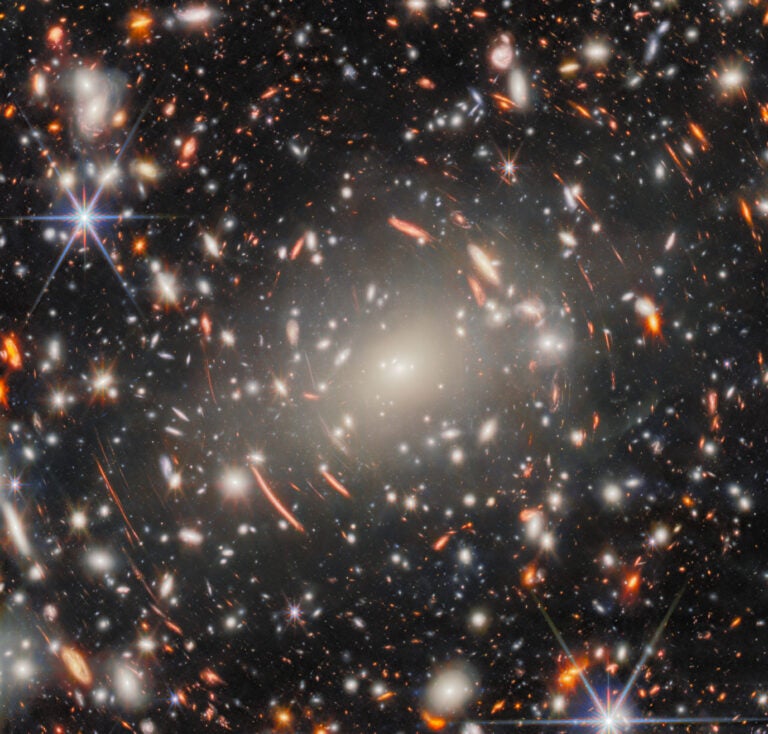Appearing to crawl across space is 30 Doradus, better known as the Tarantula Nebula, in the newest photo from the European Southern Observatory (ESO) presented during the American Astronomical Society meeting this week, along with updated data on star formation in the region.
The red and yellow strands that spread across the image are cold, dense interstellar gas seen at radio wavelengths by the Atacama Large Millimeter/submillimeter Array telescope and superimposed on a previous infrared photo from ESO’s Very Large Telescope and Visible and Infrared Survey Telescope for Astronomy, which show a pink cloud of hotter gas surrounding increasingly bright stars near the center. The region’s filaments resemble the legs of the large spider for which it is named.
The Tarantula Nebula is located in the Large Magellanic Cloud, a dwarf galaxy gravitationally bound to the Milky Way that is about 170,000 light-years from Earth. The photogenic nebula contains numerous massive stars several times the mass of our Sun, which have been helping astronomers over the years better understand how gravity influences the gas that ultimately creates these celestial bodies.
According to the latest research published in The Astrophysical Journal, the region’s dense clouds of cold carbon monoxide are able to collapse under the weight of self-gravity to form new stars, despite those young stars releasing energy that should shred the clouds and blow them away. Against astronomers’ expectations, even in regions of the cloud where the gas should be too chaotic to collapse, gravity is prevailing, allowing star formation to proceed.
Scientists believe this discovery could have a larger impact across the universe.
“What makes 30 Doradus unique is that it is close enough for us to study in detail how stars are forming, and yet its properties are similar to those found in very distant galaxies, when the universe was young,” said ESA scientist Guido De Marchi, a co-author on the latest research, in an ESO news release.
“Thanks to 30 Doradus, we can study how stars used to form 10 billion years ago, when most stars were born.”










